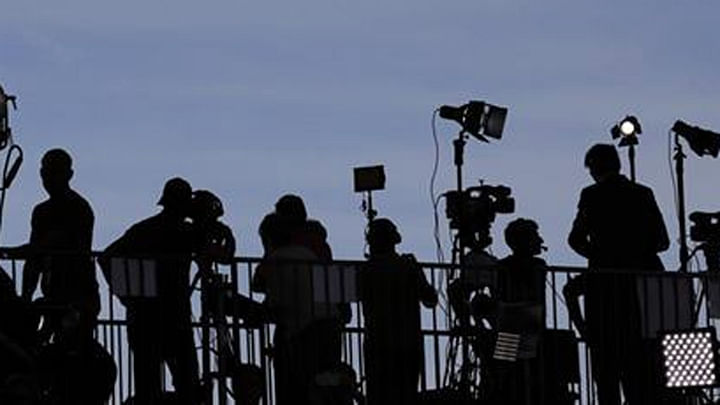(This article was originally published on 3 May 2016. It is being republished to mark the World Press Freedom Day on 3 May.)
According to a report collated by Freedom House, a non-partisan research group that deals with basic human rights and freedoms, Press Freedom fell to its lowest average in 2015 in over a decade. It is in this context, that we celebrate World Press Freedom Day on May 3, and it is not looking good for India.

Some Numbers and Snapshots of Violation of Press Freedom in India
According to the 2015 Special Report by the Press Council of India, among the 80 cases of journalist murders since 1990, only one case has successfully gone to trial, and justice has been delivered – the gangrape of a female journalist in an abandoned mill in Mumbai. This also only happened because the case was tried in a fast-track court under anti-rape laws. Almost all the remaining cases are pending in courts. In some cases, chargesheets are yet to be filed by the police. Assam and Uttar Pradesh are the worst states to be a journalist, with Jammu and Kashmir and Tamil Nadu next in line.
Apart from the numbered killings of journalists, media workers and their families, there are hundreds of cases of assault, aggression, unlawful imprisonment and sexual attacks on journalists while on duty, or in direct relation to the content of their job. Environmental corruption, especially investigative reporters covering illegal land mining mafias in Madhya Pradesh, Chattisgarh, Orissa and Jharkhand are most susceptible to attacks. 47% of the journalists killed in India covered politics as a beat; 66% of the deaths were cold-blooded murder, according to reports by the Committee to Protect Journalists.
It’s easy to deduce that Freedom of Press is flimsy at best, in India, with 97% of the cases still under trial (CPJ), or in the initial stages of investigation. In recent months, many journalists have faced threats of aggression by right-wing groups which doesn’t bode well for the future of the Freedom of Press under the current Hindu nationalist central government. Four journalists from Chattisgarh remain in jail after a year for ‘being naxal supporters’ and ‘associating with a terrorist organisation’. In fact, they were arrested for their reporting on tribals and resource abuse by those in power.
.jpg?auto=format%2Ccompress&fmt=webp&width=720)
Freedom of Press as a Fundamental Right in the World’s Largest Democracy
That India is the biggest democracy in the entire world is often paraded around as a proud fact, but how good of a democracy is it when the Fourth Estate is under terrible duress? Why does Freedom of Press not find separate and exclusive mention as a fundamental right in the Indian Constitution? It is believed to be included under Freedom of Speech and Expression, provided for in Article 19(1)(a) – by deduction only. Logic then dictates that Freedom of Press is subject to the same ‘reasonable’ restrictions as Freedom of Speech and Expression such as defamation, decency or morality, incitement to an offence, and the more abstract – maintenance of the sovereignty and integrity of India. In a political environment where subjective interpretations of actions and statements are the main basis for verbal or physical aggression against the victim, this glaring deficiency shines even brighter.
Also Read: On World Press Freedom Day, A Look At Challenges India Faces

Recommendations for the Safety of Journalists Falls on Deaf Ears
The Press Council of India, constituted under the Press Council Act, 1978, is responsible for upholding the freedom of Press in the country. After a detailed report, and list of recommendations to the government in early 2015 for the Safety and Protection of journalists, nothing came of it. Later, the National Union of Journalists wrote a letter to PM Modi, reiterating the difficult conditions in which the Press has to function. Nothing concrete has taken shape until now.
The main step forward recommended is creating a National Action Plan for Safety of Journalists, which recognises murder and aggression towards journalists as a cognizable offence, as is in the case of civil servants. The cases registered until now should be tried, and justice should be delivered in a special fast-track court set up for these instances. In areas of armed conflict, nodal officers from the police force or military should be appointed as an emergency point of contact for journalists. The absence of a separate database for crimes against journalists, as mentioned by Reporters Without Borders, further facilitates the oblivion into which each death fades, after the initial noise made by politicians and ideological groups.
One of the responsibilities of the Press is to highlight the misgivings, crime, neglect and corruption of those who have the power to influence the people in some way. It’s not an easy job – more so for female journalists. But if this is restricted or obstructed in anyway, at every instance democracy fails. If the ultimate power holder in a democracy is the public, and it is the job of the Press to inform the public as they make decisions, suppressing the Press is nullifying the sacrosanct ‘For the people’, and an extraordinary shame.
(At The Quint, we are answerable only to our audience. Play an active role in shaping our journalism by becoming a member. Because the truth is worth it.)
